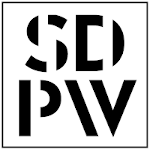Wykaz obszarów badawczych:
| # | Research Area | Dziedzina naukowa |
|---|---|---|
| 1 |
In recent years, the development of optimization algorithms tends toward specialization. State-of-the-art solutions primarily require laborious setting of multiple initial parameters, which in real-world scenarios can be difficult, if at all possible. In this view, we advocate the need to shifting the focus from the highly specialized approaches towards more universal problem-agnostic methods. To this end we will focus in this project on non-parametric control policies that could successfully replace some of the complex highly parameterized procedures. The key concept is to apply non-parametric methods for steering the optimization process and abstracting from any a priori knowledge about the problem being solved. Realization of the project will involve 2 PhD students and the tasks will be shared between them. Both students will have the possibility to apply for a monthly stipend (for the period of up to 36 months) granted by the National Science Center, as part of the OPUS project. |
Information and Communication Technology |
| 2 |
Self-supervised learning (SSL) methods have shown significant potential in improving the sample efficiency of deep learning and in providing a starting point for the learning of downstream tasks. Contrastive SSL methods have become a standard pre-training approach for a range of domains such as NLP and vision. Initial results suggest that non-contrastive SSL has been able to narrow the gap to the performance levels of contrastive methods, while obviating the need for explicit construction of negative samples. The aim of this research project is two-fold: 1) investigate the extent to which contrastive and non-contrastive methods can be used in novel SSL architectures, 2) examine whether the alignment of representations in SSL can be achieved by alternative methods, such as enforcing the ability to predict an input representation from the representations of similar inputs. |
Information and Communication Technology |
| 3 |
A prevalent theme present in the contemporary representation learning approaches is to pre-train large foundation models on huge datasets. Such approaches utilize static datasets constructed at a particular point in time, which contrasts with the constantly changing and expanding nature of data available on the internet. The proposed research will explore a new paradigm where the training dataset is constructed on the fly by querying the internet, enabling efficient adaptation of representation learning models to selected target tasks. The aims of this research project include 1) design methods to query relevant training data and use it to adapt the representation learning model in a continuous manner, 2) make progress towards building self-supervised methods that given a description of a task, autonomously formulate their learning curricula, query the internet for relevant training data, and use it to iteratively optimize the model. |
Information and Communication Technology |
| 4 |
Globalization of threats to homeland security, such as international terrorism, smuggling of weapons or drugs became one of the main challenges for security forces in the 21st century. In effect, new, scientifically grounded methods for fighting organized crime have been proposed in recent years. One of rapidly developing approaches are Security Games (SGs), which consist in modeling tactical security issues as games between security forces (secret service, police, etc.) and organized attackers (terrorists, military groups, etc.). Over the last 10 years, as part of my research team's activities and based on international collaboration, we have proposed several methods effectively approximating SG solutions using optimization metaheuristics and random sampling methods. The aim of the thesis is to extend some of these methods to the case of multi-objective SGs in which the Attacker (Follower) and the Defender (Leader) have more than one criterion for optimizing their strategies. |
Information and Communication Technology |
| 5 |
Abstract Visual Reasoning (AVR) comprises problems that resemble those appearing in human IQ tests. For example, Raven's Progressive Matrices present a set of images arranged in a 3x3 grid with a missing panel in the bottom-right corner. The test-taker has to discover relations governing 2D shapes (and their attributes) located in the images to select an answer, from a provided set of options, that best completes the matrix. In general, AVR tasks focus on fundamental cognitive abilities such as analogy-making, conceptual abstraction, or extrapolation, which makes advancements delivered by this research applicable to diverse areas, extending well beyond the investigated tasks. In this research we plan to verify the abilities of Large Language Models (LLMs) and Large Vision Models (LVMs) to solve AVR tasks, both synthetic and representing real-world images.
|
Information and Communication Technology |
